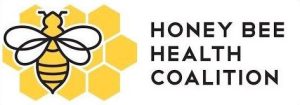 Honey Bee Health Coalition Releases 2nd Edition of Foulbrood Identification and Mitigation Guide
Honey Bee Health Coalition Releases 2nd Edition of Foulbrood Identification and Mitigation Guide
Denver, Colo., November 22, 2022— The Honey Bee Health Coalition released an updated guide for beekeepers aiming to identify and mitigate foulbrood disease in their honey bee colonies. The new guide includes renewed diagnostic tools as well as updated guidance for both beekeepers and veterinarians on the judicious use of antibiotics to treat American and European Foulbrood.
“American and European foulbrood continue to vex beekeepers, leading to regulatory and production costs. New tools are available for diagnosing both diseases and for mitigating their effects,” said Jay Evans, Research Scientist at the USDA Agricultural Research Service. “This document describes key field and lab diagnostics for foulbrood, community resources available to beekeepers, and current law regarding antibiotic use. With the increased importance of veterinarians for honey bee health, and a ‘Onehealth’ (integrated) view of treating bee disease, this document sets the stage for rational care of foulbrood disease in honey bee colonies.”
The Food and Drug Administration (FDA) enacted a Veterinary Feed Directive (VFD) rule in 2017 regarding the use of antibiotic treatments on livestock. The new ruling classified honey bees (Apis mellifera) as livestock, thus requiring beekeepers to consult with a veterinarian prior to purchasing and applying antibiotics to their honey bee colonies. The underlying concern is that overuse and/or prophylactic use of antibiotics can lead to microbial resistance.
“While mites take most of our management time, bee pathogens still require our diligence as we steward bee colonies,” said Dewey Caron, Emeritus Professor of Entomology & Wildlife Ecology at the University of Delaware. “This revision of our foulbrood disease guide emphasizes how to distinguish between the two foulbrood diseases by using detailed illustrations. It also clarifies the need to secure a veterinarian if antibiotics are going to be used. This guide is a must-have tool to keeping healthy bees.”
The guide provides information on both American and European Foulbrood, details steps for testing and management, and explains what measures beekeepers should take to prevent the pathogens from entering their operation—and if they do, how to minimize their spread. If antibiotics must be used, the guide details how beekeepers and veterinarians can work together to determine proper antibiotic use to keep bacteria from developing resistance.
The full guide is offered free of charge at the Honey Bee Health Coalition’s Website: https://honeybeehealthcoalition.org/resources/managing-foulbrood/
About the Honey Bee Health Coalition
The Honey Bee Health Coalition brings together beekeepers, growers, researchers, government agencies, agribusinesses, conservation groups, manufacturers, brands and other key partners to improve the health of honey bees and other pollinators. Its mission is to collaboratively implement solutions that help achieve a healthy population of honey bees while also supporting populations of native and managed pollinators in the context of productive agricultural systems and thriving ecosystems. The Coalition focuses on accelerating the collective impact of efforts in four key areas: forage and nutrition; hive management; and crop pest management.
The Honey Bee Health Coalition is a project of the Keystone Policy Center, a nationally recognized nonprofit that brings together diverse stakeholders to find collaborative, actionable solutions to public policy challenges.
Contact:
Matt Mulica
mmulica@keystone.org
(303)531-5511





